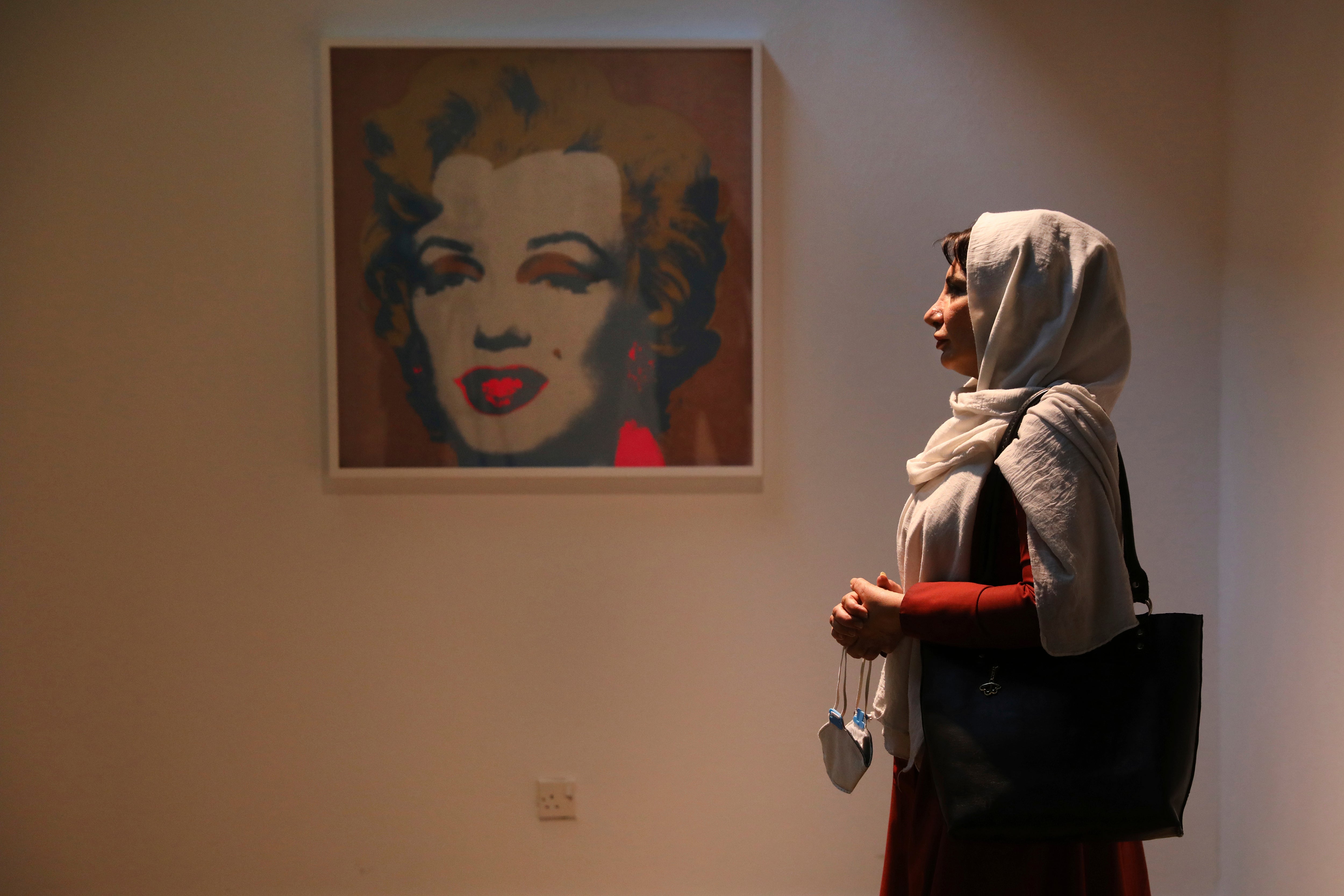Warhol in Tehran: Iranians flock to American pop art exhibit
Iranians are flocking to Tehran's contemporary art museum to marvel at American pop artist Andy Warhol’s iconic work

Your support helps us to tell the story
From reproductive rights to climate change to Big Tech, The Independent is on the ground when the story is developing. Whether it's investigating the financials of Elon Musk's pro-Trump PAC or producing our latest documentary, 'The A Word', which shines a light on the American women fighting for reproductive rights, we know how important it is to parse out the facts from the messaging.
At such a critical moment in US history, we need reporters on the ground. Your donation allows us to keep sending journalists to speak to both sides of the story.
The Independent is trusted by Americans across the entire political spectrum. And unlike many other quality news outlets, we choose not to lock Americans out of our reporting and analysis with paywalls. We believe quality journalism should be available to everyone, paid for by those who can afford it.
Your support makes all the difference.Iranian hard-liners, now back at the helm of the country, may regularly rail against the poisoning of Islamic society by Western culture, but in Tehran Iranians are flocking to the contemporary art museum to marvel at American pop artist Andy Warhol’s iconic soup cans.
The circular floors of the Iranian capital’s Museum of Contemporary Art display a sprawling line-up of 18 classic Warhol works, recognizable at first glance: silk-screen portraits of Communist China’s founding leader Mao Zedong and Hollywood star Marilyn Monroe paintings of Campbell Soup cans and a vintage print of former first lady Jacqueline Kennedy.
The exhibit, simply named A Review of Andy Warhol’s Works, first opened in June and closes on Sunday. The still-surging coronavirus, which has killed more people in Iran than any other country in the Middle East, forced the museum to close its doors to Warhol fans for a few weeks in August.
“I love this painting,” gushed 46-year-old Fatemeh Rezaee, taking in the colored ink of Marilyn Monroe’s face, which Warhol produced in 1962 soon after the actress killed herself. “By looking at it, I visualized Marilyn Monroe’s life story in my head. It makes the concept of death really tangible for me.”
Rezaee, a retired teacher in a loose silk hijab, was so enthralled by the exhibit that she flew all the way from her home in the southern city of Shiraz to see it — twice.
She went on: “His selection of colors is outstanding and to me conveys a combination of feelings such as melancholy and mortality.”
Warhol’s works are among a permanent art collection worth billions of dollars kept in the Tehran museum vault. As oil boomed during the reign of Shah Mohammad Reza Pahlavi, the country acquired thousands of pieces, including Monets, Picassos and Jackson Pollocks, before the 1979 Islamic Revolution ousted the pro-Western monarchy and vaulted Shiite clerics to power.
Iran’s new theocracy first banned modern art and packed away the famous paintings. But in recent decades as cultural restrictions eased, some 1,500 Western art pieces from the dynastic era have gone back on display — with much fanfare. In 2015, Tehran’s municipal council even plastered the city’s billboards with hundreds of works by great American painters, from Rothko to Hopper, transforming the sprawling city into a giant, open-air exhibit.
Still, a visitor won’t find Warhol's grittier fare, like his notorious experimental films, on display in Tehran. In 2005, when the museum showcased its entire collection of 20th-century American and European masterworks, choice pieces — including a Renoir nude — were hidden to avoid offending conservative Islamic sensibilities.
The audience in Tehran on Wednesday nonetheless appeared satisfied with Warhol’s silk-screen printings that tested orthodoxies by portraying consumerist themes in the early 1960s.
“People have exceptionally welcomed Andy Warhol paintings’ exhibition,” said museum spokesperson Hasan Noferesti, noting the crowds amid the coronavirus pandemic required the museum cap the number of visitors per hour.
One visitor, 21-year-old microbiology student Shahin Gandomi dressed in a black shirt and wearing his hair in a ponytail, praised the Mao Zedong painting series.
“When an artist portrays a dictator in an artwork, it appears like that dictator has been taken down from his sacred position," he said.
The showcase may be coming to an end, but Noferesti said the museum plans to put more Warhols and Western artists on display soon.
Although Iran has no diplomatic relations with the United States and hostilities have simmered between the countries since 1979, bootleg copies of Hollywood blockbusters and Western music remain popular in the country, particularly among young urbanites.
Tensions with the U.S. have surged recent months, as the election of President Ebrahim Raisi, the protégé of Iran’s supreme leader, brought hard-liners to power across every branch of government.
Iran has accelerated its atomic program and talks to revive Tehran's now-tattered 2015 nuclear deal with world powers have stalled for months. Three years ago, then-President Donald Trump reneged on the accord and mounted an economic pressure campaign that has crippled the country's economy.
But at Tehran's sleek, white-walled exhibit this week, there was no talk of political tensions or American sanctions.
“There have been great artists in history, and it is tremendously good that we can get to see their artworks here,” said 20-year-old graphics student Kourosh Aminzadeh, who had come back for a second visit.